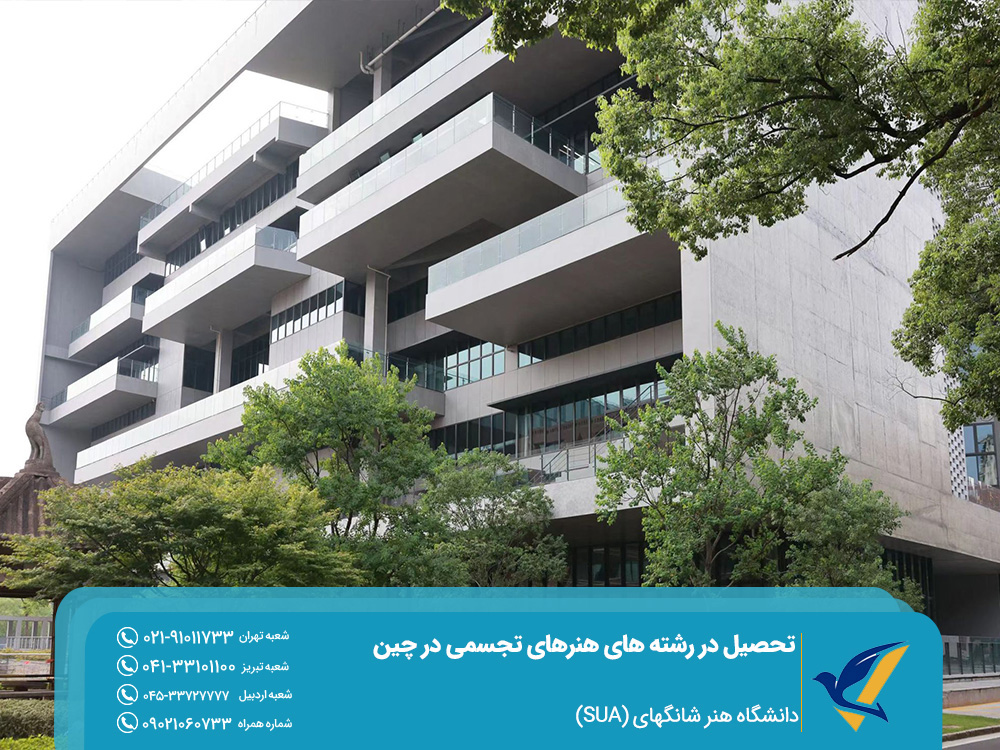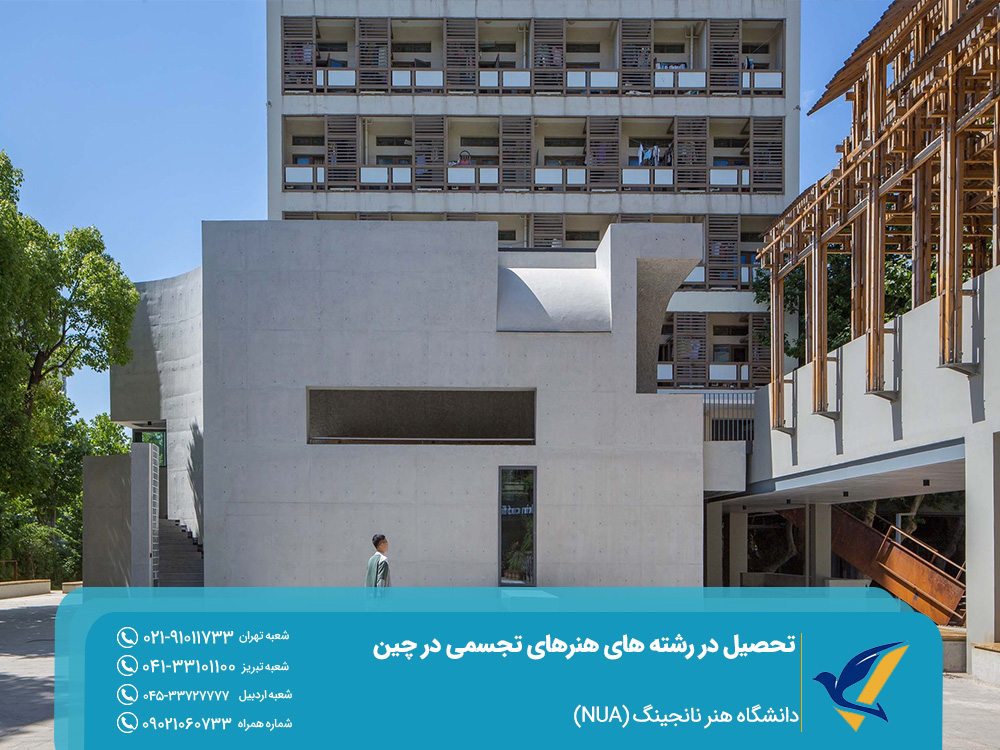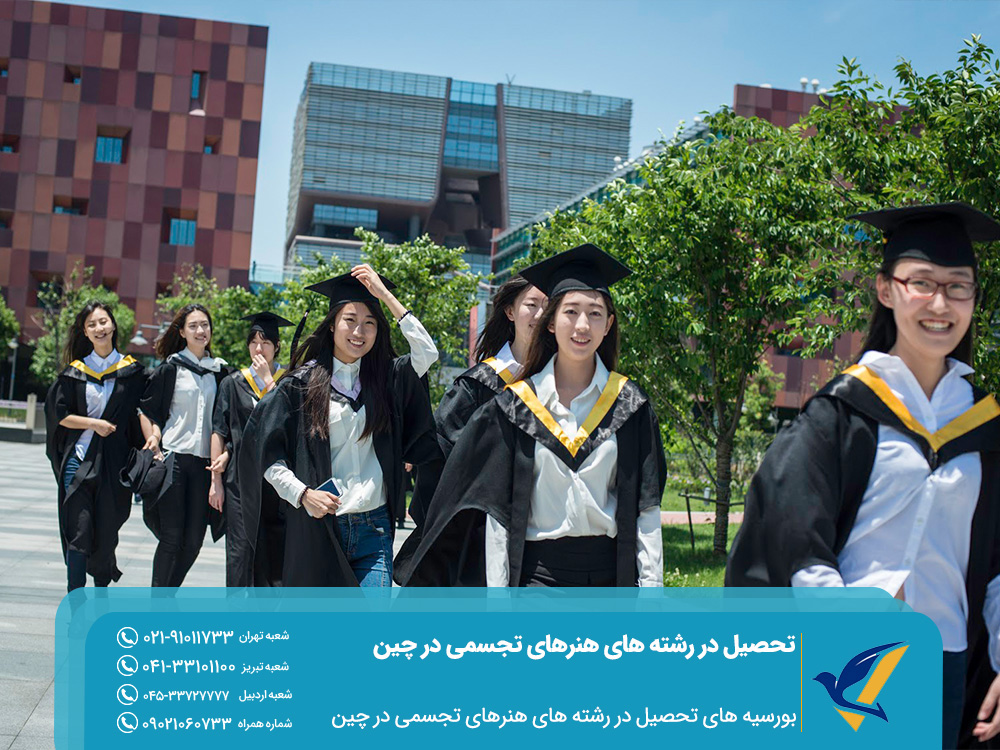China, with its valuable artistic heritage dating back thousands of years, has today become one of the major hubs for visual arts education worldwide. Studying visual arts in China has experienced significant growth in recent years, which is a result of extensive investment by the Chinese government in educational infrastructure, museums, and art galleries. The top universities for visual arts in China attract students from around the globe due to their well-equipped studios, distinguished faculty, and international curricula.
According to the QS World University Rankings, four Chinese art universities rank among the top 50 art schools globally, reflecting the high quality of art education in the country. One of the main reasons international students choose China is the affordability of studying visual arts compared to Western countries.
What makes studying visual arts in China unique is the combination of traditional Eastern art education with modern Western techniques. China’s art market is also flourishing and, with a transaction volume of $13.4 billion in 2024, ranks as the second-largest art market in the world after the United States. This creates diverse job opportunities for graduates of China’s top visual arts universities. In the following sections, this article from the Elm Vira website will explore studying visual arts in China in more detail.
Introduction to Visual Arts Studies in China
Studying visual arts in China has now become an attractive option for international students. With an artistic history spanning over 5,000 years, China is the birthplace of traditional arts such as calligraphy, ink painting, carving, and sculpture, all of which have been integrated with modern and contemporary art forms. According to the China Institute of Higher Education Research (CIHE), over 120 universities and higher education institutions in China offer specialized programs in visual arts. These fields cover a wide range of disciplines including traditional Chinese painting, Western painting, sculpture, graphic design, digital arts, photography, animation, and multimedia arts (Wang & Liu, 2024).
The art education system in China combines precise technical training, deep theoretical foundations, and creative methodologies uniquely. Art students in China spend an average of 28 hours per week in practical studios, which is notably higher than the average 20 hours in Western countries, highlighting a stronger focus on hands-on skills. Professor Li Xiaoyang, Dean of the Academy of Fine Arts at Peking University, believes that China’s art education system is based on merging rigorous technical skills with creative freedom — an approach that cultivates artists with diverse skill sets.

Why Study Visual Arts in China?
Studying visual arts in China offers unique advantages for international students. One of the most important benefits is the affordability of studying visual arts in China compared to Western countries. Additionally, pursuing an education in China provides a rare opportunity to immerse oneself in the rich culture and art of this ancient country. Most international art students in China have cited their experience with Chinese art culture as a key factor in their decision to study art there.
Top visual arts universities in China, such as the Central Academy of Fine Arts (CAFA), Shanghai University of Arts, and China Academy of Art, offer advanced infrastructure, specialized galleries, and well-equipped studios, creating an ideal environment for artistic growth. With an art market valued at $13.7 billion in 2024, China hosts the world’s second-largest art market, providing numerous opportunities for artists and art graduates. This vibrant art market, coupled with the Chinese government’s investment in developing creative industries, creates a promising career outlook for graduates in the arts.
Benefits of Learning Chinese for Art Students
Learning Chinese is one of the most important investments international students interested in studying visual arts in China can make. Art students who are proficient in Chinese participate in educational and exhibition opportunities on average 78% more than their peers limited to English-only programs. Learning Chinese is also a pathway to better understanding the philosophy of Chinese art — a philosophy influenced by Taoism, Confucianism, and Buddhism.
Students who can read original Chinese art sources gain a much deeper understanding of the techniques and philosophies behind them, which adds authenticity and depth to their artworks. Furthermore, foreign artists who have participated in Chinese language programs and are proficient in the language are on average 35% more successful in China’s art market.
From a financial perspective, students fluent in Chinese can enroll in Chinese-taught courses, which are generally less expensive than international programs in visual arts. Additionally, these students have greater access to part-time work opportunities in galleries, museums, and art studios, which helps cover living expenses and adds valuable experience to their resumes.

Top Visual Arts Universities in China
Studying visual arts in China has recently become an attractive option for international students. The number of foreign students in China’s art programs has increased by more than 60% compared to 2020. This upward trend is due to the unique combination of China’s artistic traditions with contemporary approaches, extensive government investment in educational infrastructure, and the affordability of studying visual arts in China.
According to the QS World University Rankings for Art and Design, seven Chinese universities are ranked among the top 100 worldwide, reflecting the improved quality of art education in the country. Leading Chinese visual arts universities attract prominent international faculty members, continuously update their curricula, and build connections with creative industries, creating a dynamic environment for art students. Today, Chinese art universities serve as a crossroads that blend tradition with innovation.
1. Central Academy of Fine Arts (CAFA)
The Central Academy of Fine Arts (CAFA), established in 1950 in Beijing, is considered the most prestigious art education institution in China and is ranked 23rd globally in the QS 2025 rankings. Designed by Arata Isozaki, the Japanese Pritzker Prize-winning architect, CAFA boasts stunning architecture and hosts over 800 international students from 60 countries annually.
CAFA consists of eight main faculties: Chinese Painting, Oil Painting, Sculpture, Design, Architecture, Multimedia Arts, Art History, and Art Theory. Its flagship program, “Contemporary Art with Chinese Roots,” empowers students to integrate Chinese artistic traditions with contemporary techniques.
The cost of studying visual arts at CAFA for international undergraduate students ranges from approximately $8,500 to $9,500 per year, and for master’s students, from $10,000 to $12,000 per year. The university offers numerous scholarships, including the CAFA International Artistic Talent Scholarship valued at $10,000 per year for outstanding students. Studying visual arts in China at CAFA provides a unique opportunity to engage in global artistic discourse through a distinct cultural perspective.

2. Studying Visual Arts in China: Shanghai University of Arts (SUA)
Shanghai University of Arts (SUA), with a history of over 110 years, is the second oldest art university in China and the country’s first modern art university. Located in the heart of Shanghai’s art district, SUA is recognized as a pioneer in visual arts education with an international approach. It is ranked 31st globally in the QS 2025 rankings and has partnership agreements with more than 80 universities and art institutions worldwide.
The university comprises 15 specialized faculties, including Painting, Sculpture, Digital Arts, Photography, Animation, Design, New Media Arts, and Cinema. A unique feature of SUA is its Art and Technology Innovation Center, which collaborates with leading tech companies such as Tencent and Alibaba to foster the integration of art and technology. SUA’s location in Shanghai, the economic and artistic capital of contemporary China, offers international students a unique opportunity to connect with the booming Asian art market.
3. Tsinghua University (School of Art and Design)
Known as the “Harvard of China,” Tsinghua University is one of China’s top research universities. The Academy of Arts and Design at Tsinghua (AADA) was established in 1999 through the merger of the Central Academy of Fine Arts with Tsinghua University. Leveraging the university’s academic reputation, it has become one of China’s leading visual arts institutions. In the QS 2025 rankings, Tsinghua’s School of Art and Design is ranked 26th worldwide. The academy includes nine specialized departments: Industrial Design, Graphic Design, Interior Architecture, Animation, Sculpture, Painting, Interactive Design, Product Design, and Art History.
One of the university’s strengths is its interdisciplinary approach, which allows students to benefit from the knowledge and resources of other Tsinghua faculties, such as Engineering, Computer Science, and Humanities.

4. Nanjing University of the Arts (NUA)
Nanjing University of the Arts (NUA) is one of the most comprehensive art universities in China, established in 1912 with over 110 years of experience in art education. Located in the historic city of Nanjing, it ranks fifth among China’s art universities. NUA offers one of the most diverse educational programs among the top visual arts universities in China, with 17 faculties and over 60 specialized majors.
The university is renowned for its strong programs in printmaking, ceramics, textile and fabric design, and Chinese folk arts. The Nanjing University Art Museum houses over 20,000 artworks, making it one of the largest university art collections in Asia and providing a unique opportunity to study traditional Chinese art.
NUA’s artist exchange program invites more than 100 prominent artists and professors from around the world each year, creating a dynamic international environment for students. Situated in Nanjing, a city with 2,500 years of history and culture, the university offers a unique setting for studying visual arts in China, allowing students to draw on this rich cultural background to create meaningful artworks.
5. Guangzhou Academy of Fine Arts (GAA)
Guangzhou Academy of Fine Arts (GAA) is one of the leading visual arts universities in southern China, established in 1953. It is located in Guangzhou (Canton), a major economic and cultural hub. Due to its proximity to Hong Kong and Macau, GAA benefits from a unique multicultural atmosphere and ranks sixth among China’s art universities.
The academy comprises 14 faculties offering more than 50 specialized majors, including Lingnan traditional painting (a southern Chinese painting style), conceptual arts, environmental design, and digital arts. GAA is well-known for its Art and Technology Innovation Center, which collaborates with the Shenzhen Special Economic Zone to advance projects in virtual reality, artificial intelligence, and interactive art.
The GAA Creative Industries Park, opened in 2020, is a 50,000-square-meter space that houses professional studios, creative technology companies, and art galleries in one complex. This park provides numerous internship and job opportunities for students studying visual arts in China, helping them gain practical experience in the creative industries before graduation.

Admission Requirements for Top Visual Arts Universities in China
Top visual arts universities in China have stringent admission criteria for international students. Competition for entry has significantly increased over the past five years. Universities such as the Central Academy of Fine Arts (CAFA), Shanghai University of Arts, and the China Academy of Art have lower acceptance rates for international applicants.
- Language proficiency:
- For English-taught programs: Minimum IELTS score of 6.0 or TOEFL iBT score of 80.
- For Chinese-taught programs: an HSK certificate level 4 or higher is required.
- Portfolio: The artistic portfolio is the most crucial part of the application for visual arts studies in China.
- Artist Statement: Another key requirement is the artist statement, where applicants explain their motivation, goals, and artistic vision. According to Dr. Wang Xiao, an art education specialist at Peking University, strong statements emphasizing the connection between traditional Chinese art and contemporary art increase acceptance chances.
- Interviews and Tests: Many top visual arts universities conduct on-site design tests and specialized interviews. With technological advances, some universities also offer online exams.
Tuition Fees for Visual Arts Studies in China
Tuition fees for visual arts in China are considerably more affordable than in Western countries, which is a key reason for the rise in international art students in China. Based on a comprehensive report on education costs in Asia, average annual tuition fees are:
- Bachelor’s degree: $3,800 – USD 9,500
- Master’s degree: $4,500 – USD 12,000
- Doctorate: $5,200 – USD 13,500
These costs vary depending on the city, university, and specific major. For example, studying visual arts in major cities like Beijing and Shanghai generally costs more.
- Shanghai University of Arts charges approximately USD 10,000 per year for undergraduate courses, making it the most expensive art university in China.
- Universities in smaller cities such as Xi’an or Chengdu offer tuition of around USD 4,000 per year.
Besides tuition, students should also consider living and material expenses:
- Art supplies: $150 – USD 300 per month
- Housing rent: $300 – USD 600 per month
- Food expenses: $150 – USD 250 per month

Scholarships for Visual Arts Studies in China
China is one of the most generous countries in offering scholarships to international students, which is especially important for those interested in studying visual arts in China.
-
Chinese Government Scholarship (CSC):
The most prestigious and comprehensive scholarship in China, covering full tuition fees, accommodation costs, medical insurance, and a monthly stipend of $500–700. Approximately 2,500 scholarships are allocated to art students annually.
-
University-Specific Scholarships:
Top visual arts universities in China also offer dedicated scholarships to talented international students.
-
Cultural Organizations:
Institutes like the Confucius Institute and the Asia Arts Foundation provide scholarships specifically for art students.
-
Research Opportunities:
Graduate students can access funded research projects in various art fields. The East-West Art Bridge project, supported by the Chinese Ministry of Culture, awards about 100 research scholarships annually.
-
Application Tips:
Students should submit their scholarship applications 10 to 12 months before the academic year starts. A portfolio highlighting technical skills, innovation, and familiarity with Chinese art is essential.

Job Market and Income in the Field of Visual Arts in China
China’s art market is one of the most dynamic in the world, growing at an annual rate of 7.8%. This growth offers promising career prospects for graduates in visual arts studying in China. The employment rate for art graduates in China within the first year after graduation is 78%, which is significantly higher than the global average. Graduates from China’s top visual arts universities find work in a wide range of fields. With over 5,000 museums and 3,200 art galleries across the country, there are ample job opportunities in this sector.
International graduates who are proficient in both Chinese and English earn monthly salaries ranging from $2,000 to $3,500 in roles related to gallery internationalization. Additionally, China’s massive investment in the digital industries has turned it into a major hub for digital art, animation, and gaming. Visual arts graduates with digital skills can find employment in companies like NetEase, Tencent, and ByteDance, earning annual salaries between $30,000 and $60,000.
Chinese and international luxury brands operating in China also offer jobs with annual salaries ranging from $25,000 to $70,000 for designers and illustrators. Overall, investing in a visual arts education in China can yield significant financial returns.
Summary
Studying visual arts in China is an attractive option for international students. By combining ancient artistic traditions with modern technology, China provides a vibrant and inspiring environment for artists and art students. The country’s universities have made substantial investments in educational infrastructure, studios, and art galleries, making them key centers for art education in Asia and worldwide. Top visual arts universities in China offer diverse programs in painting, sculpture, graphic design, animation, and digital arts.
These institutions enhance their global educational standards by attracting prominent international faculty and equipping modern workshops. Compared to Western countries, the cost of studying visual arts in China is much more affordable. Furthermore, the Chinese government and universities offer numerous scholarships for talented international students, often covering full tuition, accommodation, and even monthly stipends.
Beyond the quality education and reasonable costs, studying visual arts in China provides a unique opportunity to experience the country’s rich culture and traditional arts. Elm Vira Immigration Institute, with over 9 years of experience in educational migration, is one of the most successful and reputable agencies in this field. Elm Vira’s expert consultants, fully knowledgeable about China’s educational and immigration regulations, support students throughout the entire admission and residency process. For more information and to learn about studying abroad, visit the free consultation section.
میانگین امتیازات 5 از 5
Vote count: 1 Vote